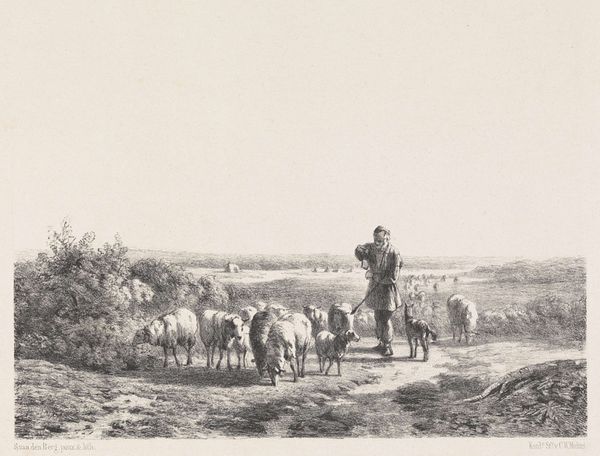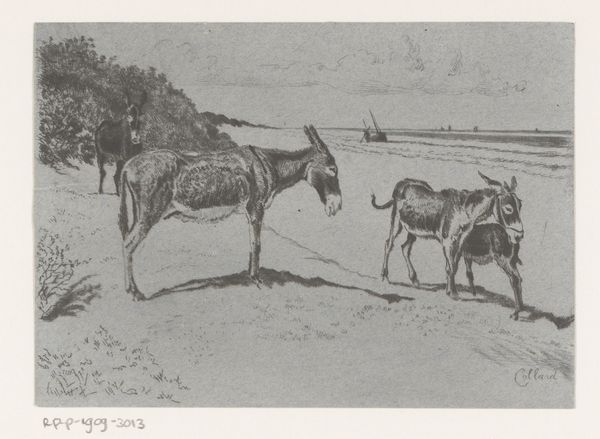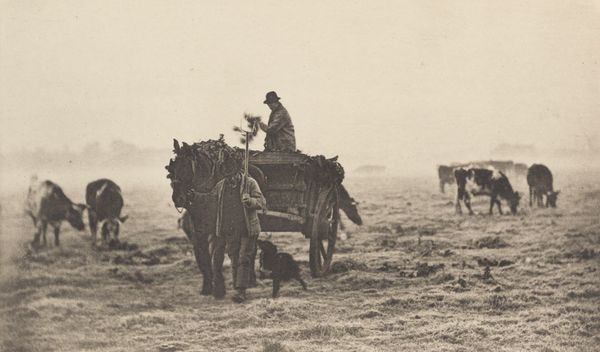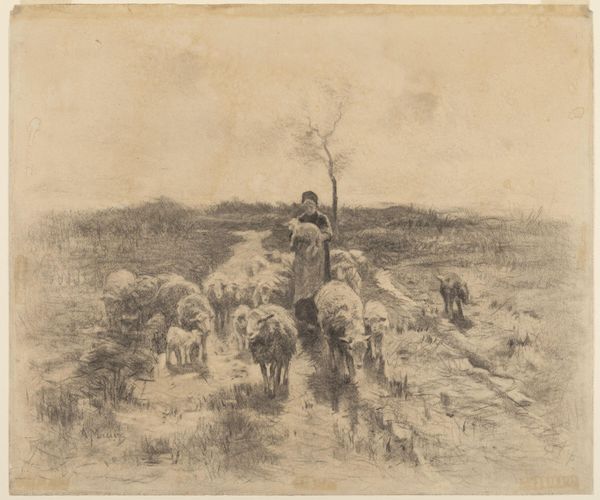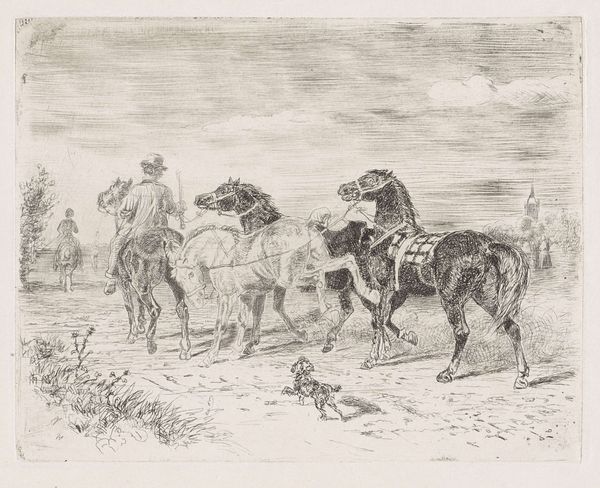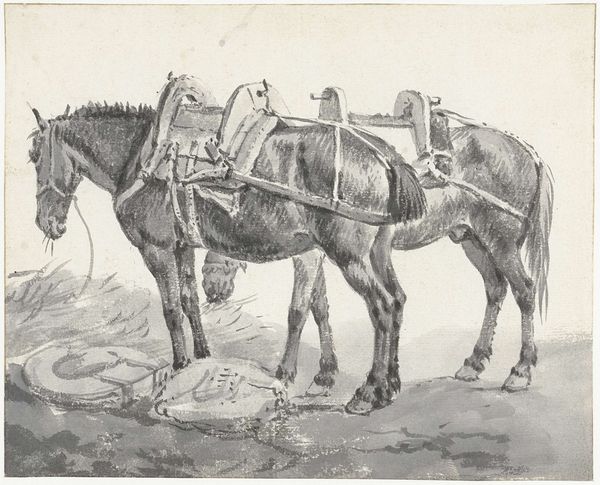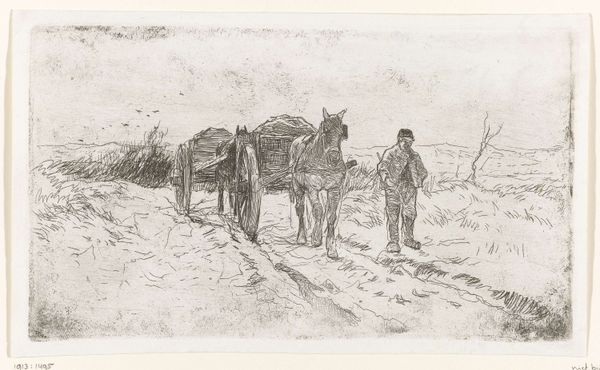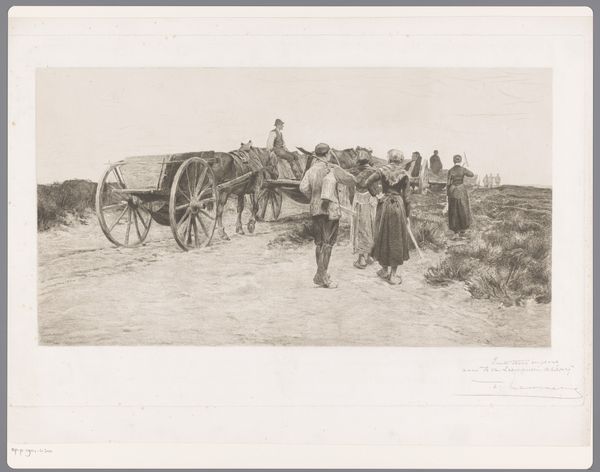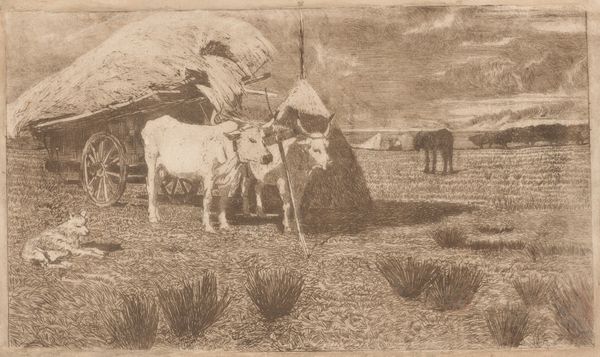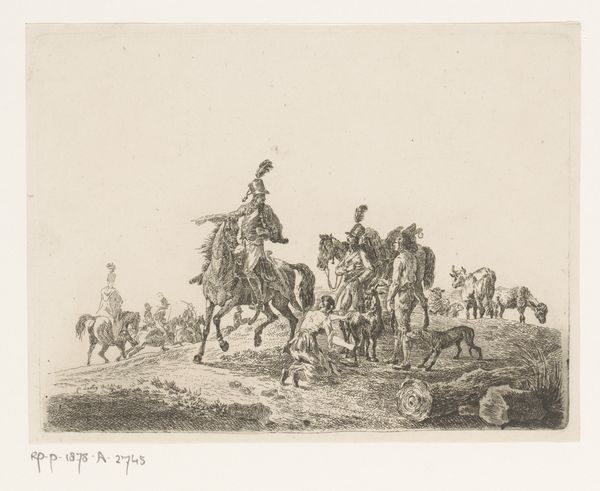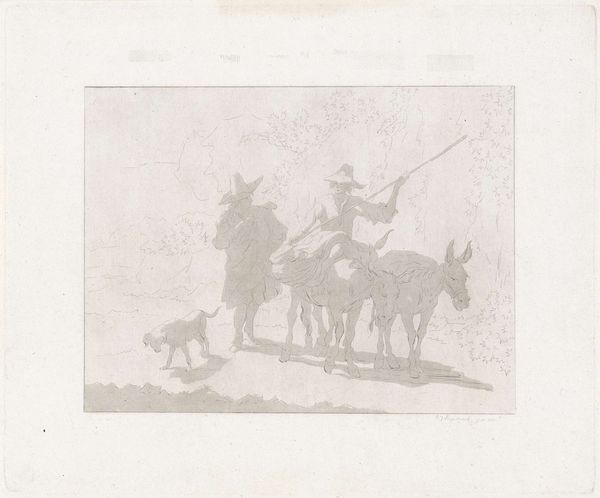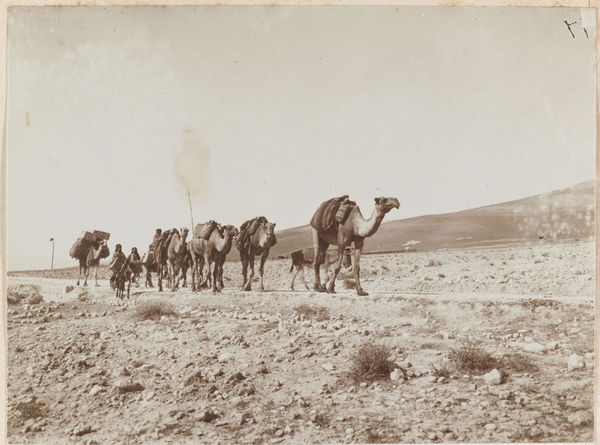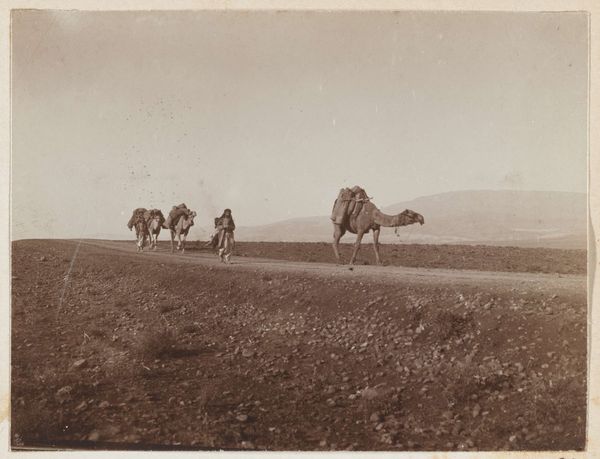
drawing, graphite
#
drawing
#
landscape
#
charcoal drawing
#
pencil drawing
#
graphite
#
genre-painting
#
realism
Dimensions: height 278 mm, width 455 mm
Copyright: Rijks Museum: Open Domain
Editor: Here we have Elias Stark’s "Landschap met paardenkar" or "Landscape with Horse Cart," created between 1859 and 1891, using graphite and charcoal. I find its stark simplicity quite striking. What stands out to you about this piece? Curator: I see a compelling snapshot of labor. Consider the material conditions: the artist using readily available charcoal and graphite to depict a rural scene, focusing on the cart and the laboring animal pulling it. This work seems deeply invested in representing the everyday materiality of working-class life. Editor: So, it's less about the picturesque landscape and more about… the work itself? Curator: Exactly. Think about the physical process: the artist making marks on paper, mimicking the physical effort of the horse pulling the cart. The drawing itself becomes an echo of that labor, blurring the line between the artistic creation and the physical work being represented. What sort of consumption would a drawing such as this be made for, compared with painting at the time? Editor: That’s a great question. Perhaps a drawing, cheaper to make, was aimed at a middle-class market eager for a romanticized view of rural life? While simultaneously glossing over the realities of rural life and labor that it’s portraying… Curator: Precisely. And consider the social context. The late 19th century saw growing industrialization and urbanization. A work like this could serve as both a nostalgic longing for a simpler, rural past and also inadvertently reveal the difficult work that supported that life. The materiality reveals it all, doesn't it? Editor: Absolutely. I never really considered the drawing as a record of labor itself before. This was enlightening. Curator: Agreed, focusing on the materials opens new avenues for interpretation.
Comments
No comments
Be the first to comment and join the conversation on the ultimate creative platform.
